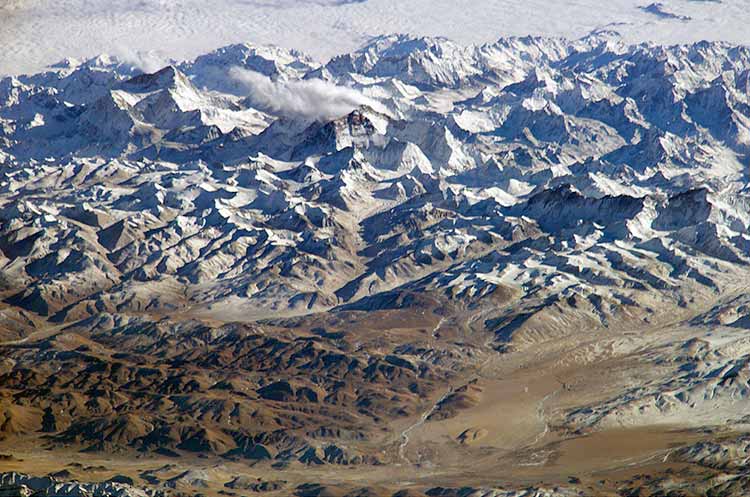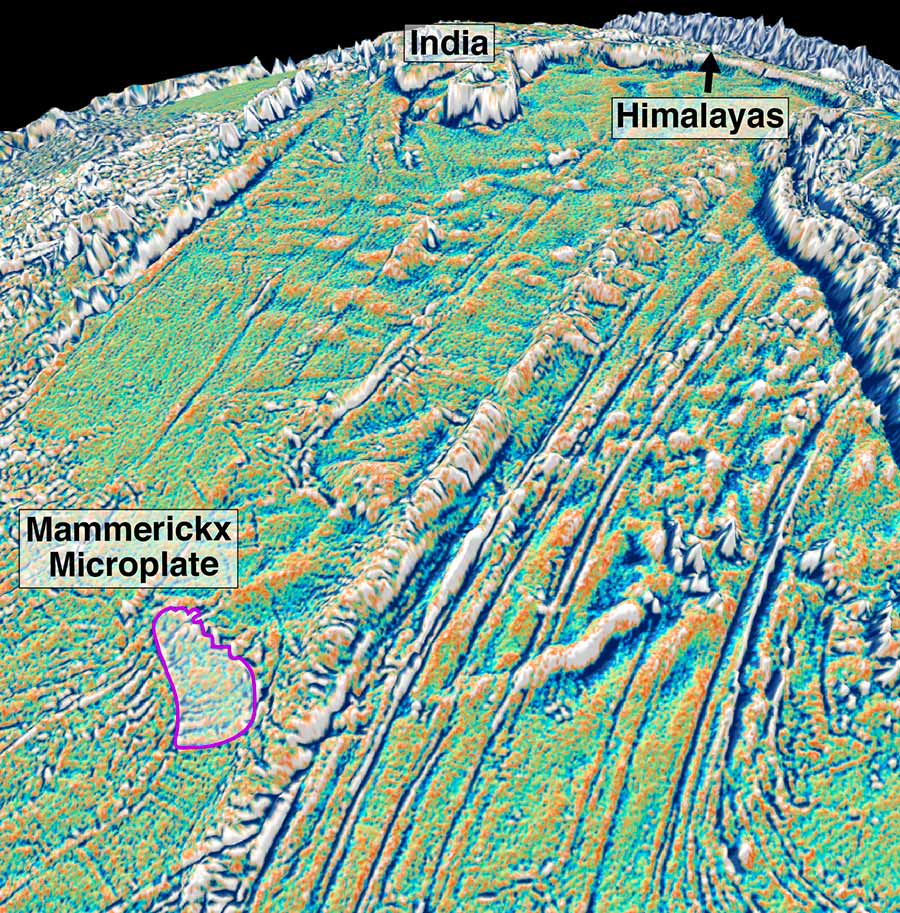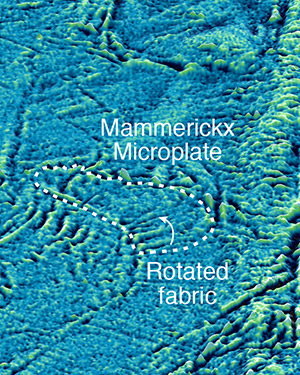
Scientists Date Birth of Himalayas from Newly Discovered Microplate
New satellite gravity map from Scripps scientist helps to establish age of mountain range
By:
- Mario Aguilera
Media Contact:
- Mario Aguilera - maguilera@ucsd.edu
- Robert Monroe - scrippsnews@ucsd.edu
Published Date
By:
- Mario Aguilera
Share This:
Article Content

A photograph of the Himalaya mountain range taken by astronauts on board the International Space Station. The summit of Mt. Everest is seen on the right. Credit: NASA
The discovery of the first micro-tectonic plate in the Indian Ocean has allowed scientists to pinpoint the exact timing of the tectonic plate collision that gave rise to the Himalayas. The international team, which includes researchers from Scripps Institution of Oceanography at University of California, San Diego suggests that the India and Eurasia plates initially collided 47 million years ago.

Mammerickx Microplate view towards India
Scientists have long debated the exact timing of the tectonic collision that produced the tallest peak on Earth - Mt. Everest. The discovery was made using the latest gravity field map of the ocean floor produced by Scripps Geophysicist David Sandwell. Earth-orbiting satellites measure the gravitational changes that occur as bumps and dips on the sea surface by the submarine mountains and valleys along the ocean floor.
“Our new higher-resolution gravity data allow us to find these very detailed features along the seafloor,” said Sandwell, co-author of the paper and a geophysics professor in the Cecil H. and Ida M. Green Institute of Geophysics and Planetary Physics (IGPP) at Scripps. “Advances in low-cost satellite technology are key to charting the deep, relatively unknown abyssal plains, at the bottom of the ocean.”
Although there are at least seven microplates known in the Pacific Ocean, this is the first ancient microplate to be discovered in the Indian Ocean. The researchers named the 68,000 square kilometer (26,000 square mile) microplate the Mammerickx Microplate after former Scripps research scientist and seafloor mapping pioneer Jacqueline Mammerickx.

Mammerickx Microplate closeup
The Mammerickx Microplate, which is slightly larger than the size of West Virginia, is revealed by a rotating pattern of grooves and hills that turn the topography of the ocean floor into a jagged landscape. These so-called “abyssal hills” record a sudden increase in crustal stress that researchers used to date the birth of the Himalayan mountain range to 47 million years ago.
The study showed that 50 million years ago, India was travelling northwards at speeds of some 15 centimeters (5.9 inches) a year—close to the plate tectonic speed limit. Soon after, it slammed into Eurasia causing crustal stresses along the mid-ocean ridge between India and Antarctica to reach a breaking point. A chunk of Antarctica’s crust broke off and started rotating like a ball-bearing, creating the newly discovered tectonic plate.
“Knowing this age is particularly important for understanding the link between the growth of mountain belts and major climate change,” said Kara Matthews, a researcher at the University of Sydney and lead scientist of the study.
The paper “Oceanic microplate formation records the onset of India–Eurasia collision” was published in the Nov. 11 issue of the journal Earth and Planetary Science Letters. The authors include: Sandwell, Matthews, and Professor Dietmar Müller from the University of Sydney.
The research was supported by the National Science Foundation, the Office of Naval Research, the National Geospatial-Intelligence Agency, and ConocoPhillips.
Share This:
You May Also Like
Stay in the Know
Keep up with all the latest from UC San Diego. Subscribe to the newsletter today.


